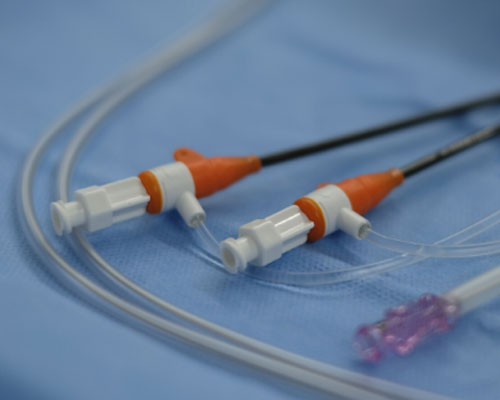How to Test Vascular Access Sheaths for Leaks and Blockages

Market Requirements:
Vascular access sheaths, also known as sheath introducers or introducer sheaths, are commonly used in catheterbased, minimally invasive procedures. The device acts as a hemostasis (blood-blocking) access port where catheters and guidewires may be placed/threaded into the patient’s vasculature with minimal blood loss.
The proximal end of the sheath typically has a molded and slit elastomer aperture that self-seals around catheters and guidewires after they are placed inside the patient.
The majority have a flush port mated to the side of the device which is a manual stopcock attached to a tube mated to the side of the sheath. It allows the clinician to connect a saline-filled syringe to the stopcock, open the stopcock and use the syringe to both expel any air from the interior of the sheath prior to placement into the patient or to expel blood back into the vasculature just prior to removal of the sheath from the patient near the conclusion of the procedure.
Tests are conducted to inspect for leaks and potential blockages on 100% of parts during production.
CTS Solution:
The standard leak test to test these types of sheaths uses dry compressed air pressure or vacuum decay at pressures ranging from -400 mmHg to +400 mmHg (-7.7 to +7.7 psig). The single-channel Sentinel Blackbelt or multi-channel Blackbelt Pro pressure/vacuum decay instrumentation are designed for this purpose.
The potential exists for the adhesive bond between the flush port tube and either the stopcock or the sheath to be completely or near-completely blocked should excess adhesive be applied. As such, most manufacturers execute a basic “inverted-limit” pressure decay test to verify patency from the interior of the sheath all the way out through the stopcock.
Contact CTS
To Discuss Your Leak Detection System Requirements
Contact CTS
Contact Cincinnati Test Systems to learn more about our leak detection equipment
Contact UsCustomer Login
An account is needed to view restricted documents such as user manuals and to submit RFQ requests.
Sign In